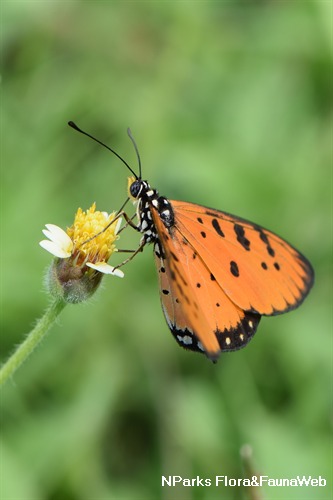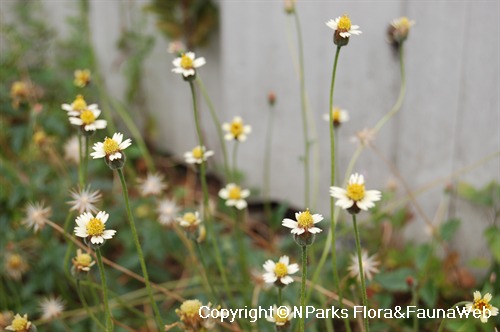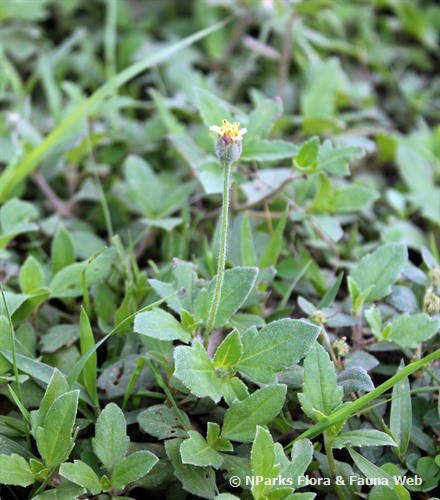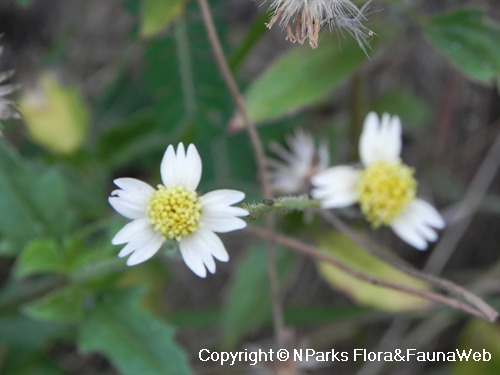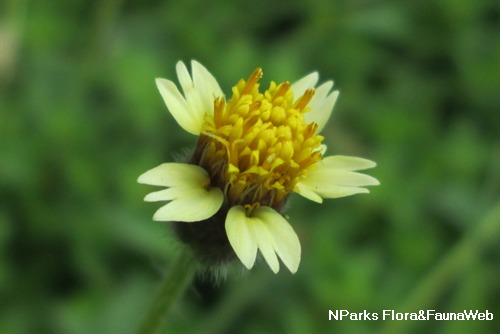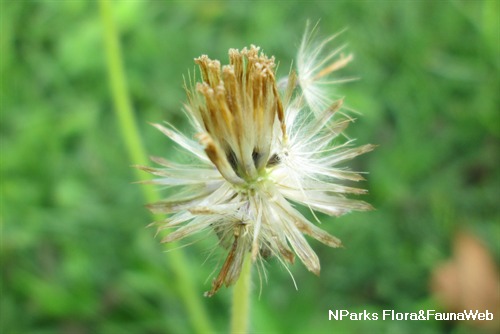
Back
Tridax procumbens
| Family Name: | Asteraceae (Compositae) |
| Common Name: | Coat Buttons, Kanching Baju, 羽芒菊 |
Name
Classifications and Characteristics
| Plant Division | Angiosperms (Flowering Seed Plants) (Dicotyledon) |
|---|---|
| Plant Growth Form | Herbaceous Plant |
| Lifespan (in Singapore) | Perennial |
| Mode of Nutrition | Autotrophic |
| Maximum Height | 0.2 m to 0.5 m |
Biogeography
| Native Distribution | Mexico |
|---|
Description and Ethnobotany
| Growth Form | Annual to perennial herbs with decumbent stems up to 0.5 m long that lie along the ground and curve upwards near the tip. |
|---|---|
| Foliage | Ovate to lanceolate leaves are deeply toothed in an irregular pattern. Opposite leaves. |
| Flowers | Compound, daisy-like flowers are composed of yellow disk florets and 4 white ray florets. The tip of the petal-like appendage of the ray florets is divided into 3-4 rounded lobes. |
| Fruit | Dry, indehiscent fruits are known as achenes. The brown, oblong fruits (2 mm long) are covered in silky hairs and have a 5-6 mm long pappus (a feathery appendage which helps the fruit to disperse by wind). |
| Cultivation | This species is considered a weed in many countries and is not typically cultivated. |
| Ethnobotanical Uses | Others: It can be used as rabbit fodder. |

